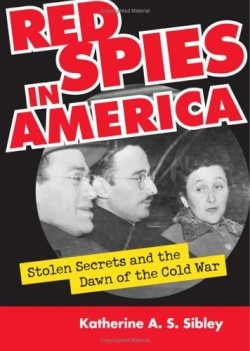Red Spies in America
Stolen Secrets and the Dawn of the Cold War
Embattled Espionage: Although the Cold War is often assumed to have begun after World War II, during the anticommunist purge inflamed by Wisconsin Senator Joseph McCarthy, the author concludes that Soviet spying during the 1930s and 1940s actually caused this undeclared war to begin a few years before the Axis powers were defeated.
In Red Spies in America: Stolen Secrets and the Dawn of the Cold War (University Press of Kansas, 370 pages, hardcover, $39.95, 0-7006-1351-X), Katherine A. S. Sibley, an historian at Saint Joseph’s University (Pennsylvania), presents an illuminating investigation of the active and extensive Soviet espionage network that operated in the United States beginning in the 1930s. Included are accounts of well-known, notorious spies, such as Whitaker Chambers and Julius and Ethel Rosenberg, and lesser known, but effective ones, including Harry Gould and Elizabeth Bentley. In addition, thoughtful commentaries explore why the Soviets would risk so much to spy on the United States during the war when its military and civilian population were decimated by the Nazis, and evaluate the success of the FBI’s counter-espionage program.
This fine narrative of Soviet spying and America’s response to it portrays the Cold War as an era of national anxiety, which bears unsettling similarities to the current era ushered in by 9/11.
Reviewed by
Karl Helicher
Disclosure: This article is not an endorsement, but a review. The publisher of this book provided free copies of the book to have their book reviewed by a professional reviewer. No fee was paid by the publisher for this review. Foreword Reviews only recommends books that we love. Foreword Magazine, Inc. is disclosing this in accordance with the Federal Trade Commission’s 16 CFR, Part 255.

